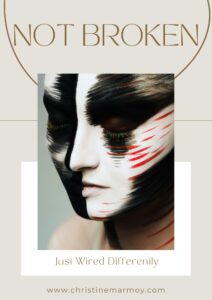Neurodivergent Pedagogical Alchemy:
Understanding how autistic and ADHD young people learn—through creative, sensory-informed play.
What is the NPA Model?

The Neurodivergent Pedagogical Alchemy (NPA) Model is an innovative, research-informed approach designed to help autistic and ADHD learners explore how they learn, regulate, and express themselves—by engaging with symbolic and sensory play in Minecraft.
Grounded in theoretical work by William James, Henri Bergson, and Donald Winnicott, the model views learning as a dynamic, relational, and embodied process. It offers an alternative to conventional assessment methods by making space for fluid identity, emotional timing, and for the centrality of play in self-expression.
Rather than focusing on deficits or isolated skill sets, the NPA model engages the whole learner—cognitively, emotionally, and sensorily.
Through structured yet flexible sessions, learners communicate their internal worlds in ways that conventional tools often fail to capture.
What Makes This Approach Different?

While most educational assessments prioritise measurable outcomes and standardised responses, the NPA model begins from a different premise:
that neurodivergent learners already know a great deal about how they function best—they simply need the right environment in which to express it.
The model offers a space where learners can construct meaning through metaphor, movement, and story.
It invites them to externalise the internal:
How they focus.
When they disengage.
What supports their thinking.
How emotional and sensory states shape their capacity to learn.
This is not data collection. It is meaning making!
Structure of the Programme
The NPA programme takes place over six one-to-one sessions in a secure (private) Minecraft environment.
Each session explores a specific theme related to learning and regulation, guided by the model’s framework.
| Week | Theme | Focus |
| 1 | Time & Flow | Rhythms of attention, transition thresholds |
| 2 | Study Selves | Identity, masking, social context |
| 3 | Attention Mapping | Sensory regulation, distractibility |
| 4 | Memory & Meaning | Learning styles: narrative, symbolic, spatial |
| 5 | Relational Learning | Co-regulation, solo vs social processing |
| 6 | Integration | Synthesising preferences into supportive strategies |
While each theme has its own focus, the sessions remain responsive to the learner’s emerging needs, preferences, and patterns.
What Do You Receive at the End of the Programme?
Following the six-session programme, you’ll receive a comprehensive, personalised Neurodivergent Learning Profile outlining:
How the learner approaches, initiates, and sustains learning.
Their relational, sensory, and emotional needs in learning contexts.
Recommendations for environment, routine, and communication strategies.
This profile is not diagnostic! It is an in-depth, interpretive insight into how the young person learns—and how best to support them.
Why Minecraft?

Minecraft offers a highly adaptable, sensory-controlled space that reflects how many neurodivergent young people think and communicate. It enables expression through structure, texture, and metaphor—allowing learners to explore identity and cognition without relying solely on language.
It is both a sandbox and a mirror: A space where self-knowledge can be built, shaped, and seen.
Who Is This For?

This programme is designed for learners aged 11–18 who:
Are autistic, ADHD, or both (diagnosed or self-identifying)
Struggle with traditional forms of assessment or school engagement (teaching methods).
Experience executive function challenges and/or sensory sensitivities.
Mask or present inconsistently in social or academic environments.
Are highly verbal yet find it difficult to articulate emotional and/or cognitive needs.
About me
I’m Christine, a researcher in autism and ADHD with a focus on pedagogical innovation, sensory experience, and creative self-expression. I developed the NPA learning model after working with neurodivergent learners whose intelligence, insight, and creativity were often obscured by systems not designed with them in mind.
This model is the result of years of academic study, practical experimentation, and careful listening.
Find more about me here.
It is not therapy. It is a space for self-discovery—through guided, creative interaction.
If you have any questions or want to know more about the programme, get in touch with me via the form below.

 “Get Your Free Ebook: NOT BROKEN”
“Get Your Free Ebook: NOT BROKEN”